
I think I mentioned the problems of waxing and polishing before. You have to get everything just right. You have to get the right wax, you have to get the right polish, you have to get the right tools, the right towels, the right detergents for cleaning that coat, anything. The one thing that you don’t actually need to use is any sort of a power tool, including a power buffer. But while that is not a requirement because you can get by without one, having it available is more than just great. No, my dear ladies and gentlemen, it’s virtually irreplaceable. You cannot replace the power toot, or rather, it’s not going to be a fair trade-off.
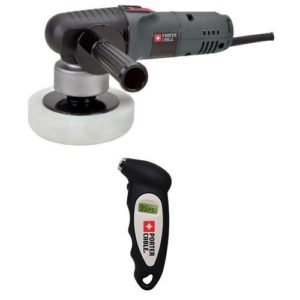
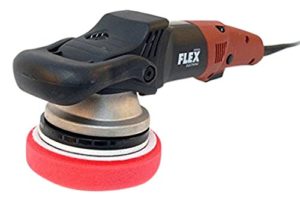
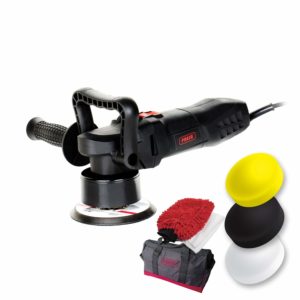
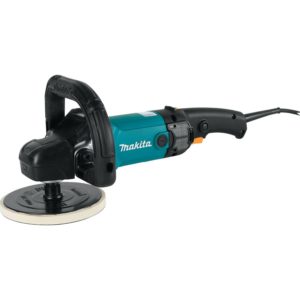
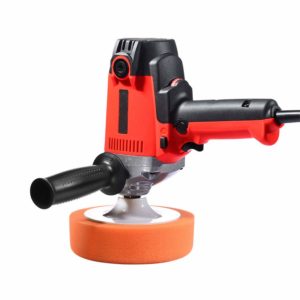
Top 5 Best Power Buffers in 2019
1PORTER-CABLE 6-Inch Variable-Speed Polisher — Most Ergonomic
There’s nothing better for polishing a boat than a variable random-orbit polisher, which this polisher is. It doesn’t work off batteries, though, and you need an AC source to power it. Even though it is probably the best polisher for the task. With the variable RPM between 2,500 and 6,800, you can work on any type of surface and any detail. Power it down for better precision and as an extra safety feature.
The polisher comes with an LED display, which is also lovely. It also has an ergonomic side handle.
- Random-orbit polisher
- Variable RPM between 2,500 and 6,800
- LED display
- Ergonomic side handle
- You need an ac source to power it
2Flex Rotary-Orbital Polisher — Best Rotary Orbit Buffer
This polisher is a bit slow, but that’s what you need for working smaller details and the like. As for working on large areas, it’s still somewhat usable but definitely not the optimum choice. The motor has a high torque despite its low RPM, and that means you won’t have to slow down when you’re working this polisher.
The tool has a knob grip. So you can use either in a vertical position or in a horizontal position. The only bad thing about it is the fact it’s a rotary orbiter, but that’s not a bad thing in itself, it just means you need to spend a little more time polishing so that you don’t leave a clearly visible circular mark. Other than that, a decent product for its price.
- High torque despite its low RPM
- Knob grip
- A decent product for its price
- A bit slow
3Presa Turbine Random Orbital Polisher — Most Lightweight Buffer
This polisher is primarily a vehicular polisher, but don’t let this little tidbit stop you. It’s a perfect polisher even for a boat, as long as you have access to the electrical grid. Its RPM is just right, and it’s variable, the polisher is very light, doesn’t vibrate much and finally, it’s a random orbit polisher.
That said, you may have difficulties fixing significant defects. The torque is high, but it’s not very high, and the low weight doesn’t make applying pressure any easier. But if you’re only waxing, that’s more than enough, and the low weight is definitely a good thing in your case.
- Its RPM is just right, and it's variable
- Very light
- Doesn’t vibrate much
- Random orbit polisher
- Primarily a vehicular polisher
- You may have difficulties fixing major defects
- Low weight doesn’t make applying pressure any easier
4Makita 9237CX3 Makita 7" Polisher — Best for Delicate Surfaces
It’s so good it’s probably a little too good for something like waxing a boat. But I have to say, it’s RPM rate is not really all that impressive. The upper cap of the RPM range is firmly within the recommended limits, but the lower cap is actually zero. That’s probably great for working some of the more delicate details carefully and can perhaps be compared to manual waxing and sanding, but when it comes to power buffers, we usually expect something else.
It’s pretty efficient, however, especially compared to all those polishers that end up flinging wax and polish everywhere, the faster they go, the farther. That’s a nice change.
But, all in all, this polisher is only good for delicate surfaces, for which it’s probably the only viable option.
- Upper cap of RPM range firmly within recommended limits
- Efficient
- Good for delicate surfaces
- RPM rate is not really all that impressive
5Vertical Portable Polishing Machine — Best of Generic Buffers
A purely vertical polisher is something that is perfect for waxing a boat. It’s not designed for marine applications, though, and it’s more of an indoor polisher.
A five-speed power tool, it’s enough for other jobs than just waxing or polishing. It’s not really all that good for sanding, although if you use a different replaceable disk, you might achieve better results.
The motor is the best part of it, though. It’s really durable, more so than you would expect from any kind of a power tool, and it’s quite silent for a motor this powerful.
The polisher is also beginner-friendly, and that’s a vital thing.
- Five-speed
- Silent for a motor this powerful
- Beginner-friendly
- Durable
- Not designed for marine applications
- Not really all that good for sanding
Buyer’s Guide
Determining What Would Be the Right Tool for the Job
An awfully long subheading, but that’s what this step is all about. You need to find out exactly what power buffers you may need and what should be left alone.At this step, I cannot really give you a piece of consistent advice, because it would largely depend on your own skills and experience with power tools.So instead, I’m going to talk about what I know people use for power buffing.Source of Power
Buffers come in all sorts of varieties. Some of them are battery operated, and some need a plug cord. The latter category tends to be more powerful, but without electricity, that is a moot point anyway.If we’re talking about buffering boats, the first thing that matters is not how good or problematic the buffer is. Unless you have a dry dock with an electric outlet or merely an outlet in the vicinity of the boat, working that buffer can be hard. You may have to buy a bunch of extension cords, all depending on your situation. But then again, you can work your boat all day long, which is useful if you have an unusually large boat or simply need to lay a few wax coat or maybe sand the vessel first, low grit and then high grit especially.Battery powered buffers are more straightforward and easy to use. You are free to move, you can work every surface, but you have to mind the remaining operation time left. A battery can hold for only so long. Most battery powered tools are not designed for waxing and polishing, which means they will run out of energy too fast.Dedicated Buffer or a Generic Power Tool
We already know that industrial grade power tools can eat through your boat if you are not cautious, although, to get it that bad you need to be quite unlucky and keep going for minutes at the same spot. And they actually have to be industrial grade, none o the regular stuff you can pick up off the shelf in a store.Does that mean that all battery powered tools are useful for waxing your boat, even if you’re not a professional detailer and lack the experience? Not necessarily, because some of them can be pretty powerful, especially 18-volt tools.Note how I said “tools.” That because many products that aren’t advertised as buffers perform well when you need them. Some of those tools are designed for drilling and screwing, especially construction tools. You can still sand and wax your boat using them, but some of them are likely to have a higher RPM and torque. That’s usually something that you want. However, you don’t really need any of that for waxing. If your power tool is battery operated, it’s going to run out of energy too fast because of the high torque, and there go your chances of finishing the boat in a single day.On the other hand, professional marine detailers can use high-torque battery powered tools very efficiently, conserving the energy and waxing the entire surface of the boat. But that takes years to learn.The bottom line is, dedicated buffers are better, of course. What is not immediately apparent, marine power buffers are a thing as well, and if you have a choice between a marine buffer and a regular buffer, go for the marine option.Random Orbit Buffers
Specialized random orbital buffers are the way to go if you have little to no expertise. Even if you have that experience, but you have a choice between working a typical buffer and a random buffer, the random buffer is going to be somewhat more convenient.Key Parameters
Essentially, you have a choice between a rotary buffer and a random-orbit buffer. What is the difference between them and what results can they offer?Rotary orbiters are much cheaper to make, and they don’t cost very much. But their trajectory is more than predictable, and that can be a problem. If you’ve ever done some sanding yourself, you know what I mean. There’s always some leftover patterns left on the surface you’ve been working on if you used the sandpaper in predictable motions. A rotary buffer will leave clearly visible circular patterns. Maybe they will only be visible under certain conditions, like the sunlight reflecting just right, but they will not be unnoticeable.A random orbit polisher is exactly that. The trajectory of the orbiter is not going to be consistent, and thus predictable. It’s not really important for sanding since when you go up with your grit, the scratches are less and less easy to notice. When you’re waxing, though, the patterns become more pronounced. Getting rid of the predictable trajectory is not the first thing that you should be concerned with, but you must be ready to spend your time fixing the result of a rotary orbiter, which you won’t have to do if you’ve got yourself a random orbit polisher.A rotary polisher is a tool that rotates in a single axis. It has subtypes as well. It can be in afemale threat or a male threat, and the average running speed of a rotary polisher should be a minimum of six hundred RPMs to about 3,000 RPMs. If the tool is about 4,000 to 10,000 RPMs,that’s not suitable for details, and so is not the average speed from 1,000 to 2,000 RPMs. Make sure the tool falls within the right range.One more thing you want to look for is the shaft. The standard size of the shaft is M14 or M16, or you can have the odd one which is about ⅝ 11 unc, depending on which country you’re from. If the buffer is not under either of these categories, chances are you’ll have a difficult time finding backing plates for itErgonomic
There are two or three types of polishers. One type is called a “vertical” polisher, the other one is called a “mini” polisher, and there are also “horizontal” polishers. A mini polisher is somewhat different in that it only has one handle on its body to grip, while both vertical and horizontal polishers have two, although their construction is different, depending on the type.Vertical polishers are great for working on vertical surfaces. Most of the time you will be working on your boat, you’re going to be using either a vertical or a mini polisher. They are just right for working the hull. Now, horizontal polishers are something you want to use on your deck. Or any horizontal surface, for that matter.Mini polishers are more than up for the job in both those cases, and they are also suitable for detailing any fittings that have complex shapes. That said, mini polishers have a much smaller backing plate, and they are best for small areas. You can still process a larger area using a mini-polishers, but it will be less efficient than using a vertical or horizontal polisher. More efficient than polishing by hand, though.As for horizontal panels, you have a few types of handles. Some of the simplest types are the side handle. Then there’s the D-handle, which tend to make thing easier for those who like this kind of grip. Finally, there’s the “no handle” option, in that case, the polisher has a rubber cap on it, so you could hold it directly.So which one is better? Neither. It’s a matter of personal preference. It all depends on how you want to hold the polisher.Torque
Torque is part of how powerful the polisher is. It’s quite simple, actually. A polisher with lower torque will slow down the moment you apply more pressure, no matter how fast it is. A polisher with higher torque will not slow down, no matter how strongly you press and how slow it is, to begin with. Of course, it’s not a binary situation, and there are torques in between that affect how well the polisher performs under pressure.It doesn’t matter how good the torque is when it comes to polishing, because the job is going to be done by the end of the day. Now, you, you will probably be more comfortable operating a high torque polisher, but that’s something of a preference, and it’s not necessarily true.Weight
The average polisher is about 7 lbs. If a polisher weighs that much, it’s perfectly normal. A lighter polisher is more comfortable to operate, and it’s less exhausting to do so. However, while it’s easy to move around if you’re actually trying to remove a defect and you want to apply a bit more pressure, you have to apply more weight because it’s light compared to a slightly heavier one.Questions and Answers
I already have that question covered it in one of my other reviews, but I’ll still answer it. Before I give you a really quick example, I’m going to say it’s not really hard to do. It’s just very tedious and tiresome, and it’s going to take a lot of your time, but otherwise, it is not complicated at all.
All you have to do is to take some marine wax, put it on your fiberglass boat by dipping the end of a towel or any piece of cloth. Rub the boat gently with that piece of fabric while working overlapping swirls. Since you’re working manually, you’re going to go slow, working a little area a time. Once you’ve done, let it haze up a little bit and come back with a terry cloth towel. Now, you have to rub the wax off, and you do that in overlapping sections all the way around your boat. Usually, one time is enough, but if your wax or polish manufacturer has a different idea, then, by all means, you can heed their recommendation. Typically if it’s not one layer that they suggest, it’s going to be two, and that’s twice as hard since you’re working your elbow rather than a power tool. One layer is often enough to offer basic protection, and it’s easier that way when you’re doing things manually.
Another choice would be abandoning the idea or working and polishing entirely — now that would really save you some time — but unfortunately, a boat that sails unprotected from the UV and salt water can deteriorate surprisingly fast. If doing everything manually is too hard for you, you definitely want a power buffer.
I’m not saying that you shouldn’t sand and wax by hand, you will actually need to do that at least once, but only to get the feel of your boat, how it feels to work it. After you do that, working the power buffer is going to be a lot easier than if you’re going in blind.
